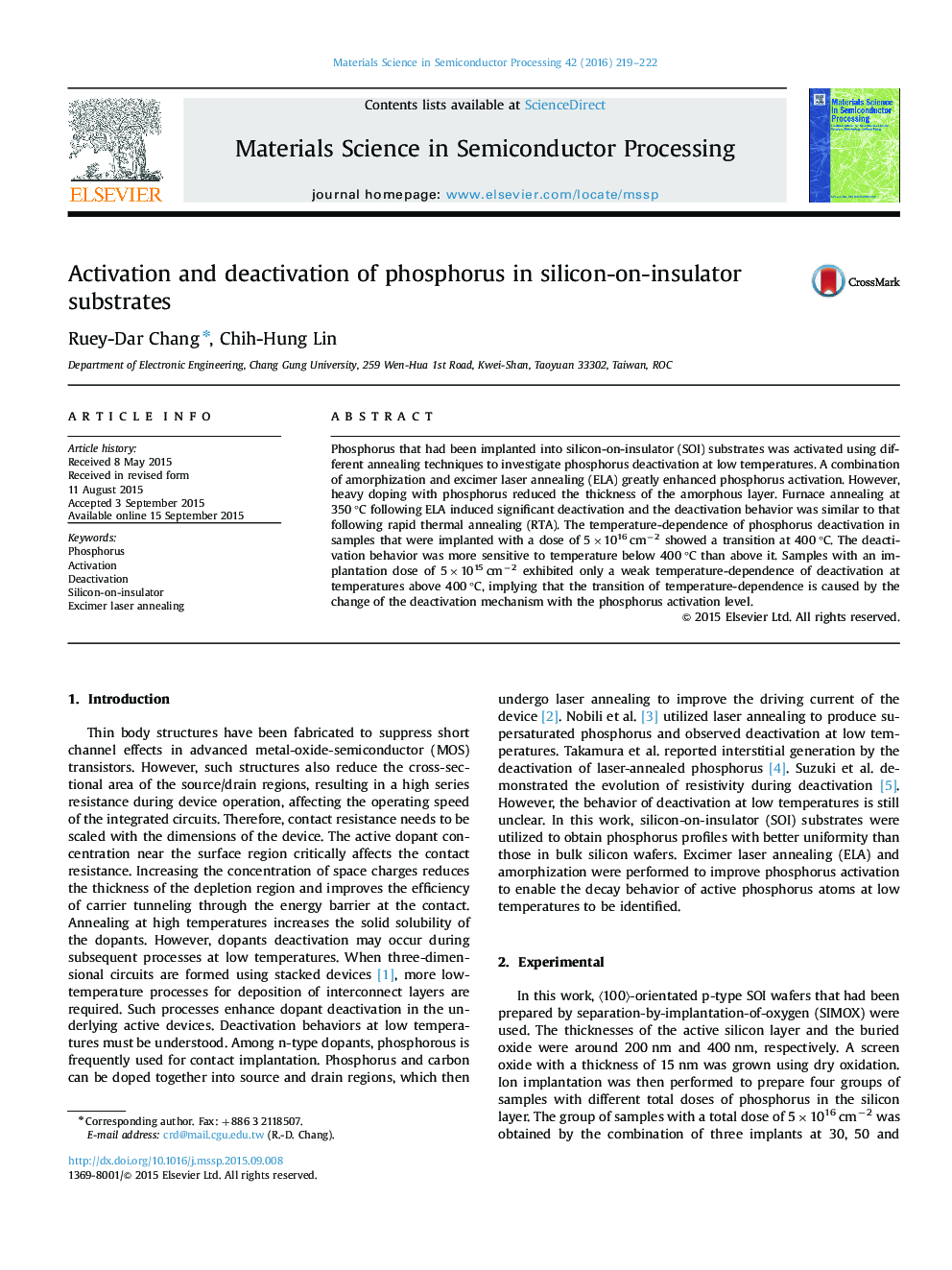| Article ID | Journal | Published Year | Pages | File Type |
|---|---|---|---|---|
| 10406975 | Materials Science in Semiconductor Processing | 2016 | 4 Pages |
Abstract
Phosphorus that had been implanted into silicon-on-insulator (SOI) substrates was activated using different annealing techniques to investigate phosphorus deactivation at low temperatures. A combination of amorphization and excimer laser annealing (ELA) greatly enhanced phosphorus activation. However, heavy doping with phosphorus reduced the thickness of the amorphous layer. Furnace annealing at 350 °C following ELA induced significant deactivation and the deactivation behavior was similar to that following rapid thermal annealing (RTA). The temperature-dependence of phosphorus deactivation in samples that were implanted with a dose of 5Ã1016 cmâ2 showed a transition at 400 °C. The deactivation behavior was more sensitive to temperature below 400 °C than above it. Samples with an implantation dose of 5Ã1015 cmâ2 exhibited only a weak temperature-dependence of deactivation at temperatures above 400 °C, implying that the transition of temperature-dependence is caused by the change of the deactivation mechanism with the phosphorus activation level.
Related Topics
Physical Sciences and Engineering
Engineering
Electrical and Electronic Engineering
Authors
Ruey-Dar Chang, Chih-Hung Lin,
